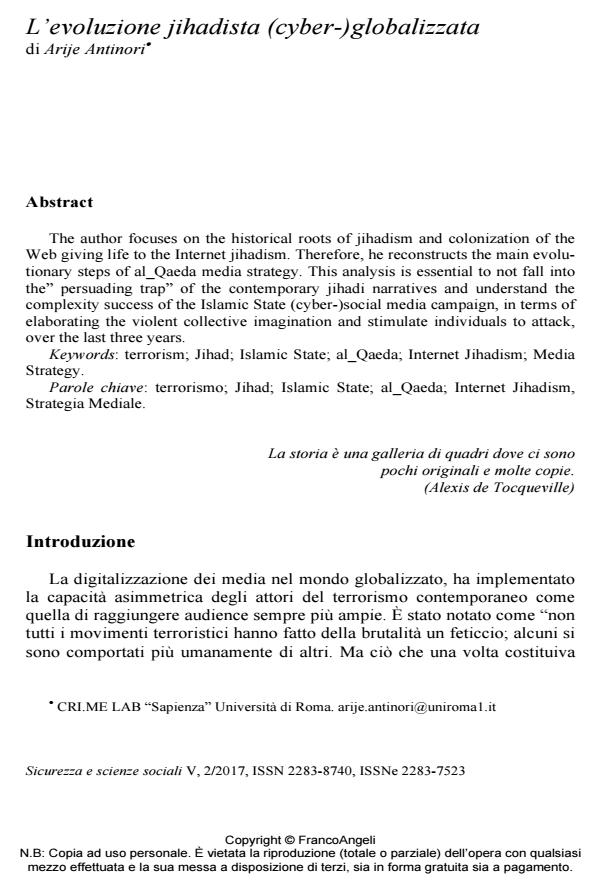L’evoluzione jihadista (cyber-)globalizzata
Journal title SICUREZZA E SCIENZE SOCIALI
Author/s Arije Antinori
Publishing Year 2017 Issue 2017/2
Language Italian Pages 19 P. 33-51 File size 126 KB
DOI 10.3280/SISS2017-002004
DOI is like a bar code for intellectual property: to have more infomation
click here
Below, you can see the article first page
If you want to buy this article in PDF format, you can do it, following the instructions to buy download credits

FrancoAngeli is member of Publishers International Linking Association, Inc (PILA), a not-for-profit association which run the CrossRef service enabling links to and from online scholarly content.
The author focuses on the historical roots of jihadism and colonization of the Web giving life to the Internet jihadism. Therefore, he reconstructs the main evolu-tionary steps of al_Qaeda media strategy. This analysis is essential to not fall into the "persuading trap" of the contemporary jihadi narratives and understand the complexity success of the Islamic State (cyber-)social media campaign, in terms of elaborating the violent collective imagination and stimulate individuals to attack, over the last three years.
Keywords: Terrorism; Jihad; Islamic State; al_Qaeda; Internet Jihadism; Media Strategy.
Arije Antinori, L’evoluzione jihadista (cyber-)globalizzata in "SICUREZZA E SCIENZE SOCIALI" 2/2017, pp 33-51, DOI: 10.3280/SISS2017-002004